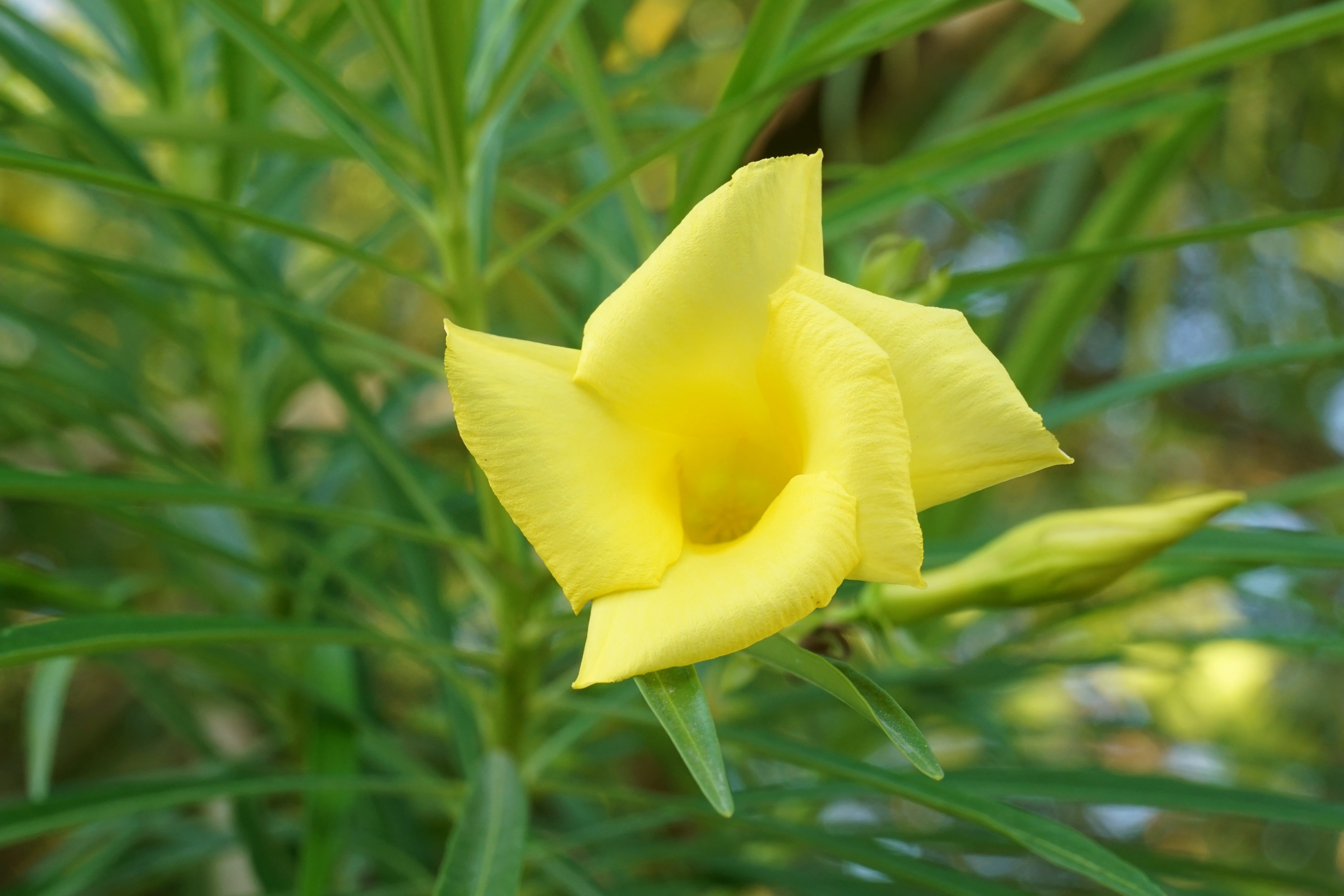Yellow Oleander
(Cascabela thevetia)

Description
Cascabela thevetia (syn: Thevetia peruviana) is a poisonous plant native throughout Mexico and in Central America, and cultivated widely as an ornamental. It is a relative of Nerium oleander, giving it a common name yellow oleander, and is also called lucky nut in the West Indies. 'Cascabel', 'cascavel' or 'cascabela' is Spanish for a small bell, a snake's rattle or a rattlesnake itself. The allusion may also be to the plant's toxicity comparable to the venom of a rattlesnake. The latin specific name thevetia commemorates André de Thevet (1516-1590), a French Franciscan priest and explorer, who explored Brazil and Guiana (where the plant is known as chapéu-de-napoleão, ie, Napoleon's hat). Cascabela thevetia is an evergreen tropical shrub or small tree. Its leaves are willow-like, linear-lanceolate, and glossy green in color. They are covered in waxy coating to reduce water loss (typical of oleanders). Its stem is green turning silver/gray as it ages. Flowers bloom from summer to fall. The long funnel-shaped sometimes-fragrant yellow (less commonly apricot, sometimes white) flowers are in few-flowered terminal clusters. Its fruit is deep red-black in color encasing a large seed that bears some resemblance to a 'Chinese lucky nut. Cascabela thevetia is commonly known as Kaneir or Kaner in Hindi language in India. It is effectively drought resistant and tolerant to high temperatures, hence found in various states of India like Andhra, Bihar, Delhi, Gujarat, Madhya Pradesh, Telangana, West Bengal, Rajasthan, Tamil Nadu, Uttar Pradesh, Odisha and Assam where semi arid climate is prevalent. All parts of the C. thevetia plant are toxic to most vertebrates as they contain cardiac glycosides. Many cases of intentional and accidental poisoning of humans are known. The main toxins are the cardenolides called thevetin A and thevetin B; others include peruvoside, neriifolin, thevetoxin and ruvoside. These cardenolides are not destroyed by drying or heating and they are very similar to digoxin from Digitalis purpurea. They produce gastric and cardiotoxic effects. Antidotes for treatment include atropine and digoxin immune fabs (antibodies) and treatment may include oral administration of activated charcoal. Ovine polyclonal anti-digitoxin Fab fragment antibody (DigiTAb; Therapeutic Antibodies Inc.) can be used to treat T. peruviana poisoning, but for many countries the cost is prohibitive.
Taxonomic tree:







